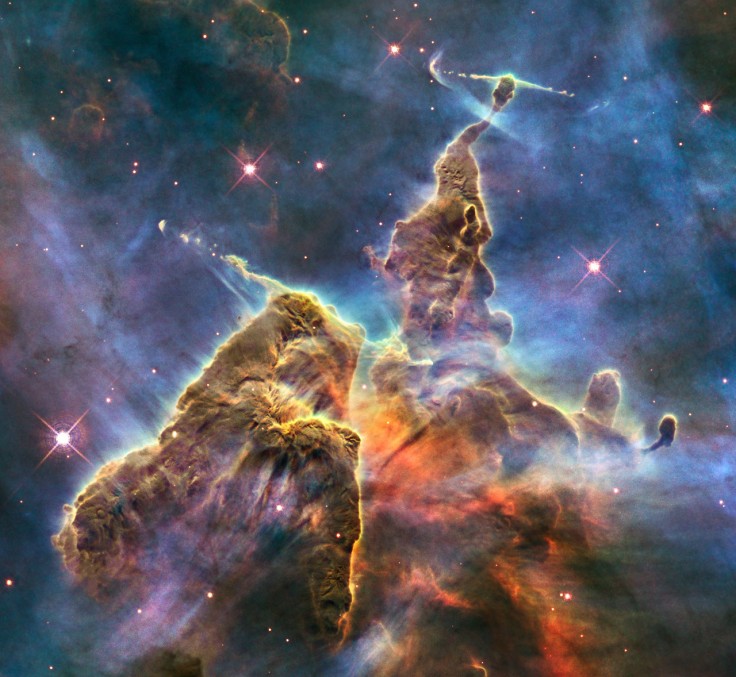
If a picture is worth a thousand words, then this one is worth so much more than a thousand. So much so that they should have sent a poet to concretely describe the scene captured on camera.
The Hubble Space Telescope previously captured the chaotic activity atop a three-light-year-tall pillar of gas and dust being eaten away by the bright light of nearby stars. This pillar of gas, which the Space Telescope Science Insititute described as "wispy clouds [looking] like a bizarre landscape from Tolkien's 'The Lord of the Rings' or a Dr. Seuss book,'" is dubbed the "Mystic Mountain." It is located in a place where infant stars firing jets of gas can be seen from its towering peaks.
Mystic Mountains Location and Description
The Mystic Mountains are located 7,500 light-years away in the southern constellation of Carina. These bizarre mountain ranges lie within the Carina Nebula, the largest nebula in the "large, diffuse nebulae," per The Planets.
The Carina Nebula, which is also known as the Grand Nebula, the Great Nebula in Carina, and Eta Carinae Nebula, was discovered and named by French Astronomer Abbe Nicolas-Louis de Lacaille in 1752. The nebula itself is highly likely to be the birthplace of many stars due to the level of dust and gaseous matter within it. This high level of dust and the gaseous matter is why there are so many infant stars within the Mystic Mountain's peaks.
Read also: [VIRAL FLASHBACK] They're Taking the Hobbits to Isengard Meme: Here are Popular Examples on YouTube
The Mystic Mountains were formed due to the radiation and fast "winds" or streams of charged particles from super-hot newborn stars in the Carina Nebula shaping and compressing the pillar, causing new stars to form within it.

A visible-light view of the Mystic Mountains features streamers of hot ionized gas following off the mountains' ridges, along with wispy veils of gas and dust. The denser parts of the pillar contain the newborn stars, which can be seen in the near-infrared-light image from The Hubble Space Telescope.
Another pair of gaseous jets, known as HH 901 and HH 902, is visible at another peak near the center of the image and is a good indicator that a new star is being born when the image was taken.
Hubble Space Telescope
The picture of the Mystic Mountains was taken with Hubble's Wide Field Camera 3, which was able to capture colors clear enough that experts were able to distinguish certain gasses, such as oxygen (blue), hydrogen and nitrogen (green), and sulfur, (red).
To do so, operators of Hubble's Wide Field Camera 3 used various filters to sample a narrow wavelength range over a broad range of visible colors. The composite color featured in the picture is the result of the operators assigning different colors to each monochromatic image associated with an individual filter. In the Mystic Mountains' case, the assigned colors were red, green, and blue.
The Mystic Mountains' picture was taken from February 1 to February 2, 2010, with an exposure time of 9.3 hours.









